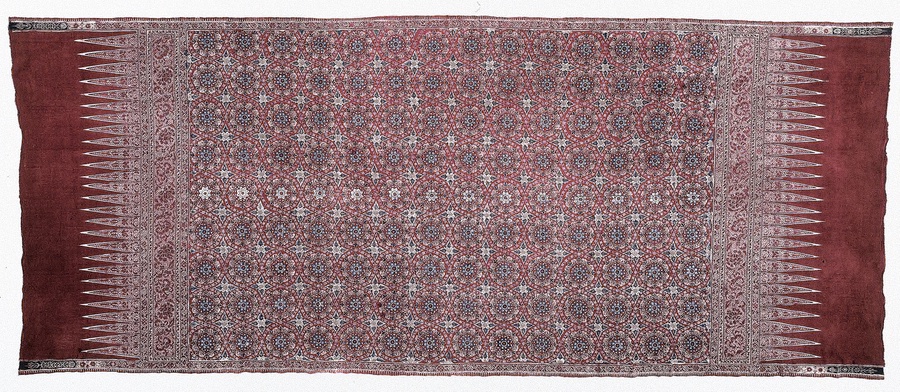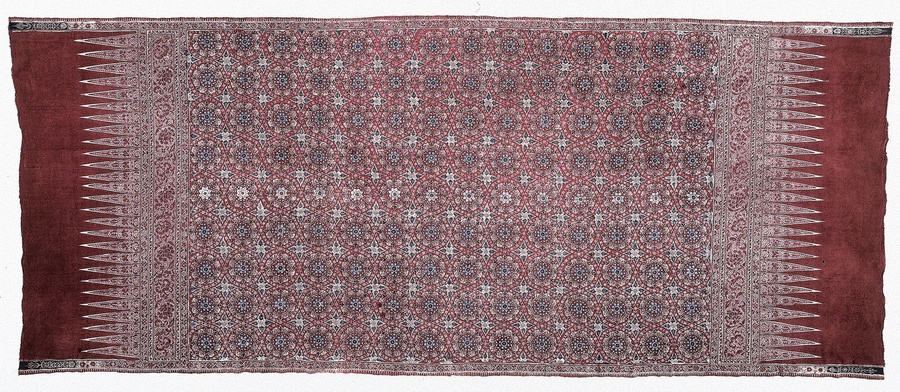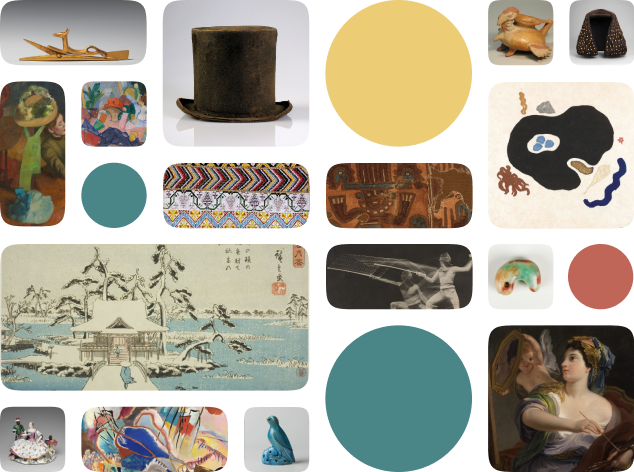About the work
A product of the spice trade aided by the Dutch East India Company, this textile is traditionally worn as a ceremonial garment. Though made in India, it bears colors and designs admired in Indonesia, particularly on the island of Sumatra. It was produced using a mix of wax resist and mordant dyeing widely common to the region.
Cleveland Museum of Art Object Description
This colorful, elegantly patterned cloth was made in India for export to Indonesia in the East-West spice trade of the Dutch United East India Company. On the island of Sumatra such cloths, worn by both men and women, acquired ceremonial status, sometimes with magical and religious connotations. The pattern influenced local textile production, especially the heading at each end with triangles (kepala) on the deep red ground. The rich colors were a renowned hallmark of Indian cotton textiles, coveted in both Europe and the East. The Indian expertise in mordant patterning and dyeing was based on centuries of experience that foreigners sought in vain to duplicate. In 1734 a Frenchman, M. de Beaulieu, documented 11 stages of the labor-intensive process. ...
Work details
"--" = no data available
All Works in Curationist’s archives can be reproduced and used freely. How to attribute this Work:
.


